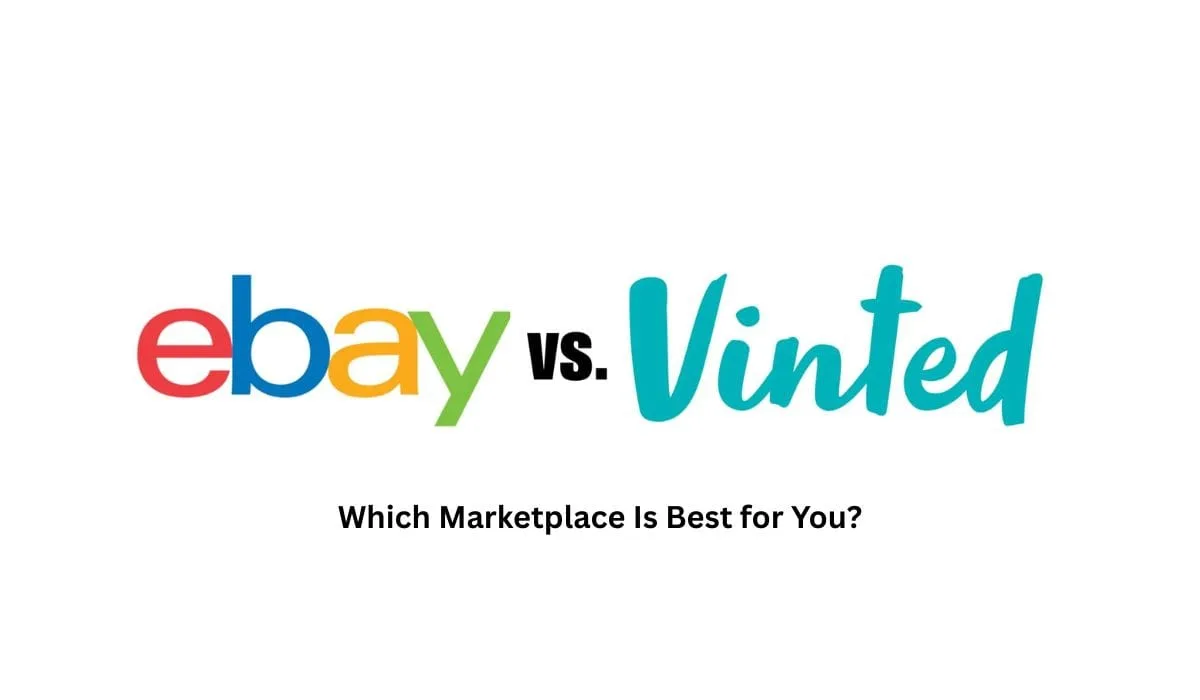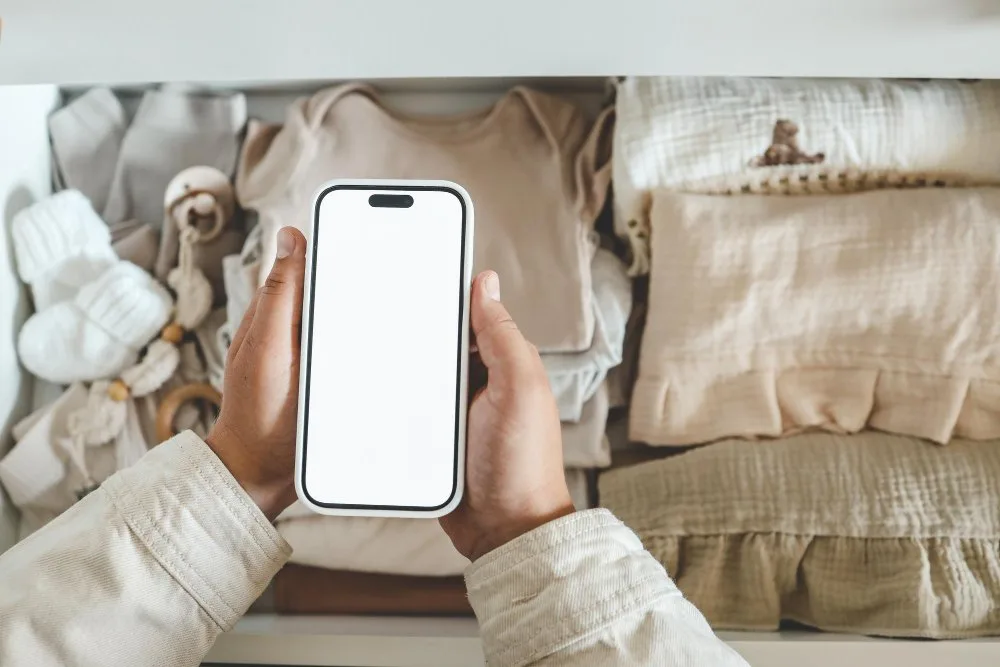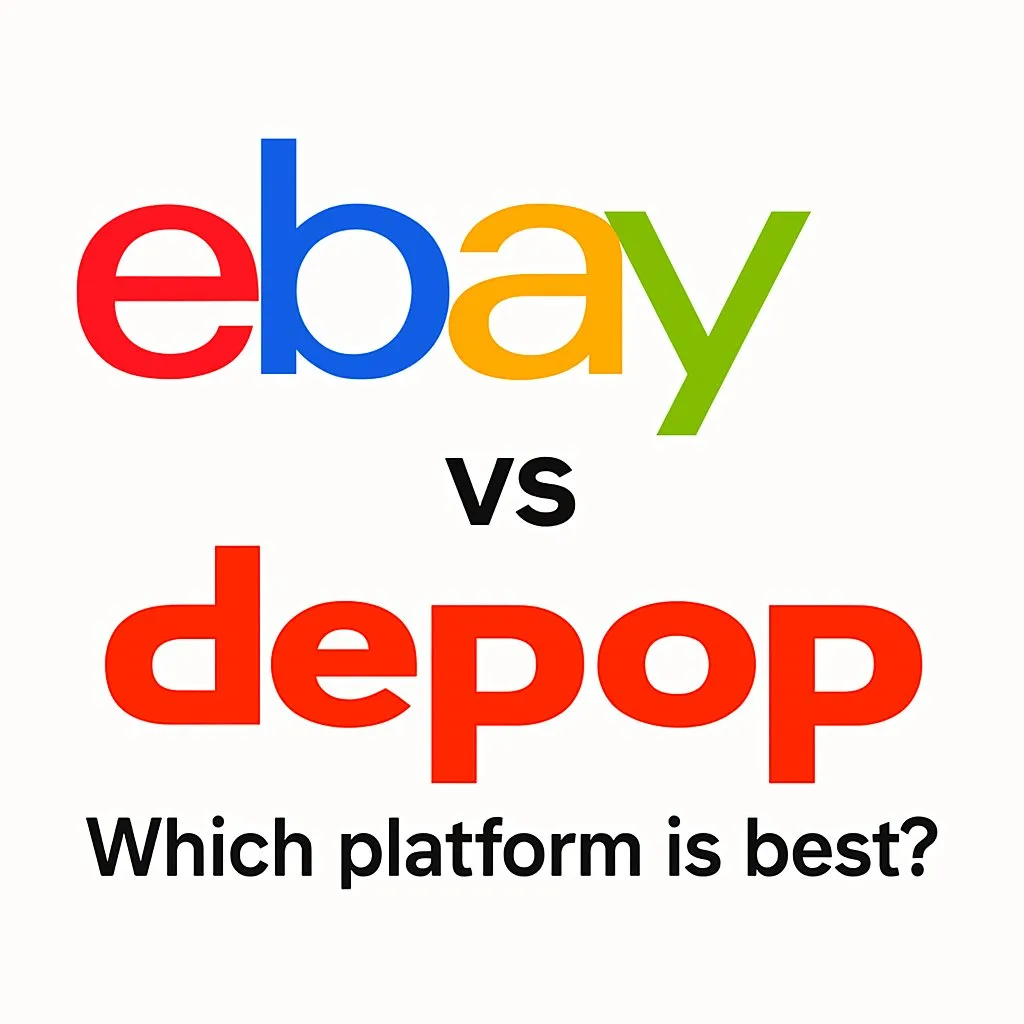Compare fees, features, and sales potential to choose your perfect platform for selling clothes online in 2025
Selling clothes online has never been easier, thanks to platforms like Vinted and eBay. Both let you reach millions of buyers, declutter your closet, and turn unused items into cash. The main difference is simple: Vinted charges no selling fees while eBay takes a percentage, but eBay allows you to sell almost anything and reach more buyers.
When choosing where to list items, Vinted focuses on fashion and offers a quick, simple process, while eBay provides options for nearly any product category, from electronics to collectibles. Prices tend to be lower on Vinted, but the platform makes selling straightforward, and buyers expect deals on used clothing.
Table of Contents
- Core Platform Differences
- US Market Insights
- Selling Process Compared
- Fee Structures and Charges
- Pros and Cons of Each Platform
- Real Seller Experiences
- Buying Experience
- Security and Privacy Measures
- Making Money and Side Hustle Potential
- Can I List the Same Items on Both?
- What Is Better Than Vinted?
- How to Lower Your Price on Vinted
- Comparison of User Base and Reach
- Sustainability and the Circular Economy
- US Tax Considerations
- Frequently Asked Questions
- Conclusion
Quick Takeaways
- Vinted is best for selling fashion items with no seller fees
- eBay has higher fees but larger reach and sells more types of items
- Both platforms offer chances to make extra money online
- Each platform has distinct advantages for US sellers depending on your goals
Core Platform Differences
eBay and Vinted are built for different types of users and products. Each platform has its own audience, rules, and selling experiences, which can affect how you choose to use them.
Overview of eBay
eBay is a broad online marketplace where sellers can list almost anything, from clothes and electronics to collectibles and cars. Started in 1995, it has millions of active users worldwide. This large user base gives sellers access to a wide audience.
Sellers can choose between auction-style listings or fixed-price “Buy It Now” options. eBay supports both individual sellers and businesses. The platform offers many listing tools, selling options, and promotional features. eBay also has built-in buyer and seller protection systems.
There are fees to list items, and final value fees apply when items sell. The platform welcomes both used and new products across many categories.
Overview of Vinted
Vinted is a marketplace focused mainly on fashion and lifestyle items, such as clothes, shoes, and accessories. The platform is geared towards individual sellers rather than big businesses. Vinted aims to create a community feel by connecting people who want to buy and sell secondhand items.
There are no listing fees for sellers, which lowers the cost to start selling. Vinted holds payment until the buyer receives and accepts their item. The platform supports only fixed-price sales with no auctions.
Vinted’s main audience is people who want to buy or sell used fashion. Its categories are more narrow, and its community is smaller but more focused on clothes and lifestyle goods.
Business Models Compared
eBay and Vinted work differently when it comes to business models. eBay allows sellers to list a wide variety of new and used products in many categories, charging fees for listings and sales. It supports both small individual sellers and large businesses.
Vinted, on the other hand, is designed for peer-to-peer selling in the fashion space. It does not charge listing fees and takes a more community-driven approach. Payments are held until the buyer is happy with their purchase. Vinted works better if sellers just want to clear out their own used items without starting a full business.
| Feature | eBay | Vinted |
|---|---|---|
| Audience | Global, wide focus | Community, fashion-focused |
| Fees | Listing & selling fees | No listing fees, small buyer fees |
| Sale Type | Auctions & Buy It Now | Fixed price only |
| Categories | Many (all product types) | Mostly fashion/lifestyle |
| Sellers | Individual & business | Mainly individual sellers |
What Is the Difference Between Vinted and eBay?
The core differences come down to focus and fees. Vinted specializes in secondhand fashion with a peer-to-peer model and zero seller fees. The buyer pays a protection fee instead. eBay is a general marketplace covering all product categories with fees taken from sellers. eBay also offers auction-style listings alongside fixed prices, while Vinted only supports fixed pricing.
US Market Insights

For American sellers and buyers, these platforms offer different experiences that reflect US shopping preferences and habits.
eBay has a massive presence in the US market, with over 85 million active buyers nationwide. Its reach extends across all 50 states, with particularly strong user bases in California, New York, Texas, and Florida. Americans use eBay for everything from fashion to collectibles, with electronics and vintage items being especially popular.
Vinted entered the US market more recently but has gained ground, particularly among millennial and Gen Z shoppers in urban areas. The platform sees highest engagement in fashion-forward cities like New York, Los Angeles, and Chicago, where secondhand clothing culture thrives.
| Feature | eBay US | Vinted US |
|---|---|---|
| User Demographics | All age groups | Primarily 18-34 |
| Most Popular Categories | Electronics, Collectibles, Fashion | Women’s Clothing, Accessories, Kids’ Items |
| Average Item Price | $20-$500 | $10-$50 |
| Time to Sell (Average) | 3-14 days | 5-21 days |
The typical eBay user in America tends to be more diverse in age and shopping interests, while Vinted attracts a younger demographic focused specifically on affordable fashion.
Selling Process Compared

Selling on Vinted and eBay works differently, especially when it comes to creating listings, choosing item categories, and handling postage and payments. Understanding each platform’s approach can help sellers decide where to list clothes, jewelry, books, or other secondhand items.
Listing Creation and AI-Powered Features
On Vinted, the listing creation process is quick and simple. Sellers can upload photos, write a short item description, set the price, and choose the item’s category in a few steps. Vinted guides sellers with prompts and suggestions, making it easy for first-time sellers.
eBay takes a bit more time. Sellers fill in details for each product, and while eBay offers some AI-powered suggestions for item titles and descriptions, more manual input is needed for specifics like size, color, and condition. eBay lets sellers set auctions or fixed prices for items. The system provides suggested prices based on similar sales, but sellers have more control than on Vinted.
Both platforms allow sellers to list items in many categories. However, eBay’s tools are more advanced, especially for optimizing listings and reaching buyers looking for rare or specific products like watches or expensive handbags. Vinted focuses more on fast and easy listings.
Item Categories: Clothing, Jewelry, and More
Vinted specializes in secondhand clothes, shoes, handbags, and accessories. Most people use it to sell and buy everyday clothing or trendy pieces. Vinted’s categories are more focused on fashion, but sellers can still list some jewelry and small accessories.
eBay covers a much wider range. Sellers can list clothing, watches, books, handbags, jewelry, and nearly any other item. There’s a bigger market for luxury goods and collectibles. This means eBay is often better for selling unique items outside of basic fashion, like rare books or specialty watches.
While both platforms support clothing sales, eBay’s extensive categories make it easier to reach buyers for non-clothing items, or to clear out things like gadgets and household goods.
Managing Transactions and Postage
Vinted handles transactions by holding the payment until the buyer receives the item, which gives sellers some security. The buyer pays for postage, and Vinted provides postage labels for common parcel shops, making shipping easy. Sellers just pack the item, stick on the prepaid label, and drop it off.
eBay manages payments through its own system, but fees are higher, and sellers are responsible for calculating postage. Sellers can choose different shipping services and set their own rates, which gives more flexibility, especially for valuable or bulky products. However, this adds steps and may be confusing, especially for first-timers.
Both platforms have systems for tracking transactions, messaging buyers, and resolving issues. eBay’s structure is more complex, but gives sellers more control. Vinted is simple and convenient for selling everyday clothes or accessories with less hassle over postage and payment.
US Shipping Options
For American sellers, shipping options differ significantly between platforms. eBay integrates with USPS, UPS, and FedEx, letting sellers compare rates directly through the platform. Sellers can also offer local pickup for larger items.
Vinted’s US shipping is more streamlined, with partnerships primarily with USPS. The platform provides pre-paid shipping labels, taking the guesswork out of shipping costs. However, this limits options compared to eBay’s flexibility.
| Shipping Feature | eBay | Vinted |
|---|---|---|
| Carrier Options | USPS, UPS, FedEx, DHL | Primarily USPS |
| Label Creation | Manual or integrated | Automated pre-paid |
| International Shipping | Supported with multiple options | Limited options |
| Local Pickup | Available | Not available |
Fee Structures and Charges
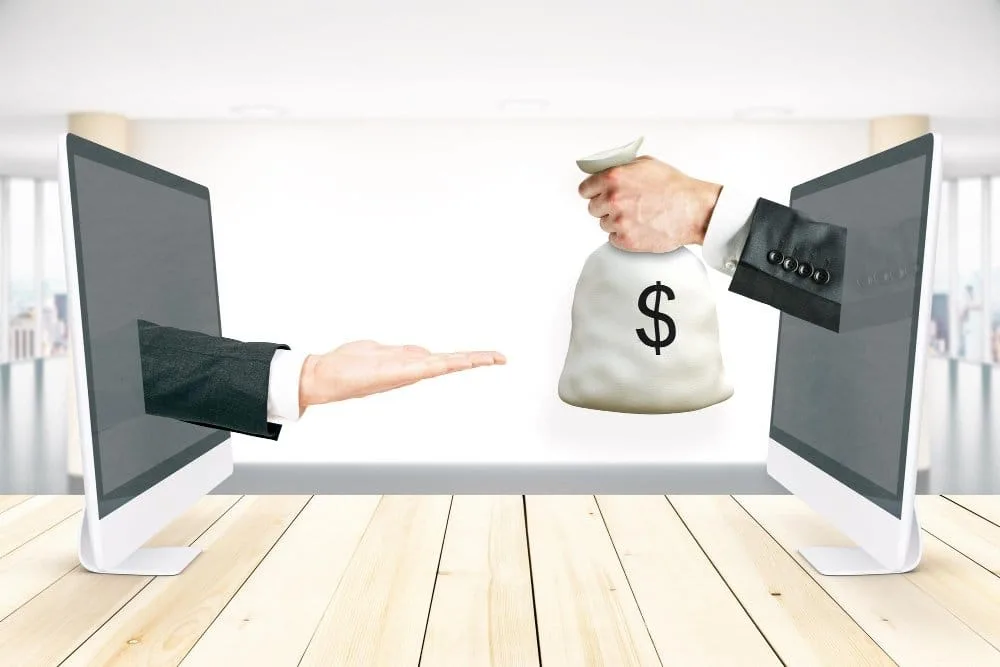
When comparing Vinted and eBay, their fee structures are among the biggest differences. Vinted has a straightforward system with no seller fees, while eBay has updated its charges to compete.
Marketplace Fees Overview
Vinted offers zero seller fees for listing and selling items. Sellers can post items for free and keep all earnings after a sale. This makes Vinted simple to understand for new and casual sellers.
eBay, until recently, charged sellers both a listing fee and a final value fee. Now, eBay has removed some selling fees in the UK to match Vinted’s approach. However, eBay still has fees for certain categories and may charge for optional upgrades, like promoting a listing or using special features.
In the US, eBay typically charges a final value fee ranging from 10-15% of the sale price, depending on the category. For most fashion items, this fee is around 12.9% plus $0.30 per order.
| Platform | Listing Fee | Seller Fee | Optional Upgrades |
|---|---|---|---|
| Vinted | None | None | Yes (promotional features) |
| eBay (US) | Sometimes | 10-15% | Yes (promoted listings) |
Is It Cheaper to Sell on Vinted or eBay?
For most US sellers, Vinted is definitely the cheaper option when it comes to fees. With no listing or selling fees on Vinted, sellers keep 100% of the sale price. However, the full picture matters:
- eBay charges fees but often results in faster sales and potentially higher selling prices
- Vinted has no fees but a smaller audience, which might mean items sit unsold longer
- eBay offers promotional tools that can boost visibility (for an additional cost)
- Vinted’s US buyer base is growing but still smaller than eBay’s massive audience
If selling lower-priced fashion items and cost is the primary concern, Vinted will typically be the more economical choice. For higher-value items where reaching the largest possible audience matters more than saving on fees, eBay might ultimately provide better value despite the costs.
Do You Make More Money on eBay or Vinted?
This depends on what items are being sold. Vinted sellers keep 100% of the sale price, but items typically sell for less due to buyer expectations. eBay sellers pay fees but often get higher prices, especially for branded or unique items. eBay’s auction feature can also drive prices up for desirable products.
For everyday casual clothing, Vinted’s fee-free model often results in better net profit. For designer items, collectibles, or higher-value goods, eBay’s larger audience and higher selling prices can offset the fees.
Final Value and Seller Fees
On Vinted, sellers keep 100% of the sale price. There are no final value fees or payment processing fees taken from earnings. The only possible deductions are if sellers choose extra promotional tools or upgrades, but these are not required.
eBay used to charge a final value fee, usually a percentage of the sale plus a fixed amount. For sellers in the UK, eBay is now removing some selling fees, especially for certain categories like secondhand clothes. Where fees are still present, they often combine the marketplace fee and payment processing fee, so sellers need to read the terms for specific categories.
For US sellers, eBay still charges final value fees on most categories. These typically range from 10-15% of the total sale amount (including shipping). Electronics might have lower fees around 10%, while clothing typically sees fees of about 12.9% plus a fixed $0.30 per order.
| Selling Price | Your Profit (Vinted) | Your Profit (eBay) | Difference |
|---|---|---|---|
| $10 | $10.00 | $8.42 | +$1.58 |
| $25 | $25.00 | $21.38 | +$3.62 |
| $50 | $50.00 | $42.05 | +$7.95 |
| $100 | $100.00 | $84.10 | +$15.90 |
Calculate Your Profits
Want to see exactly how much you’ll make selling on each platform? Use our interactive calculator to compare your potential earnings.
Try Profit CalculatorBuyer Protection and Additional Fees
Vinted does not charge sellers for buyer protection. Instead, a buyer protection fee is added for the buyer at checkout. This covers secure payments and support if something goes wrong. Sellers don’t lose any money to this fee, so payouts are not affected.
eBay used to bundle protection as part of its final value fee, but now puts more of the cost on the buyer. In some cases, there are extra fees for enhanced payment protection, returns, or dispute resolution. These may apply in special situations. Payment processing is usually covered in the main seller fees, so sellers don’t see separate charges.
Sellers on either platform need to factor in how these extra fees affect buyers, as it can impact overall sale price and customer satisfaction.
What Are the Pros and Cons of Selling Clothing on Vinted vs eBay?
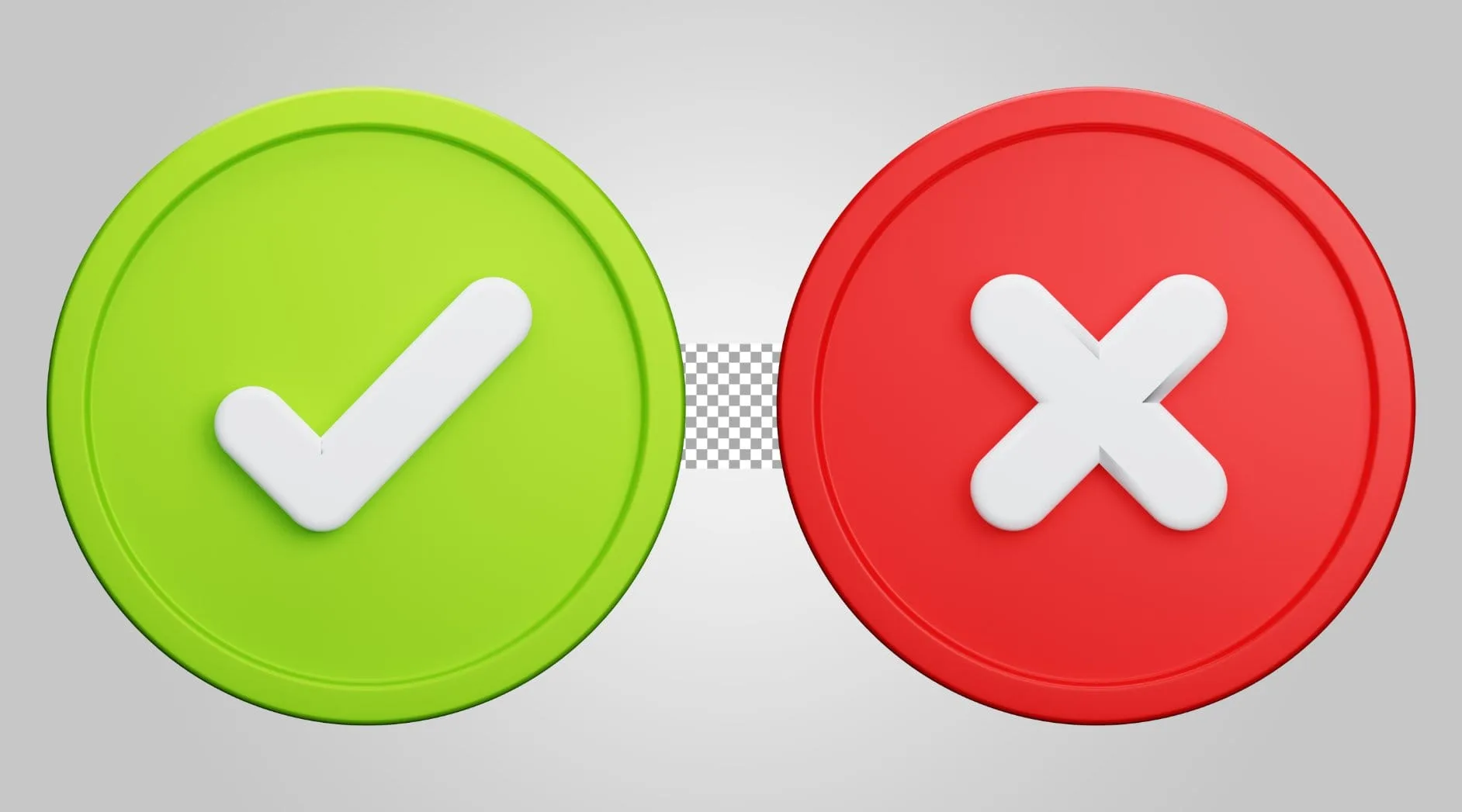
When deciding where to sell clothing items, understanding the advantages and disadvantages of each platform can help make the best choice for specific needs.
Vinted Pros
- No Seller Fees: Keep 100% of the selling price with no final value fees
- Simple Process: User-friendly app designed specifically for clothing sales
- Buyer Pays Shipping: Shipping costs are typically covered by buyers
- Fashion-Focused Audience: Buyers come specifically looking for clothing items
- Built-in Messaging: Easy communication system with potential buyers
- Bundle Discounts: Simple tools to offer discounts on multiple purchases
Vinted Cons
- Smaller Audience: Fewer buyers compared to eBay, especially in smaller cities
- Limited Categories: Primarily for fashion and accessories only
- Lower Price Points: Buyers typically expect significant discounts on retail prices
- Slower Sales: Items can take longer to sell due to smaller user base
- No Auction Format: Fixed price only, which limits price competition
- Less Brand Recognition: Not as universally recognized as eBay in US market
eBay Pros
- Massive Audience: Millions of potential buyers worldwide
- Higher Selling Prices: Auction format can drive prices up for desirable items
- Sell Anything: Broader range of categories beyond just clothing
- Established Reputation: Trusted platform with strong buyer/seller protections
- International Reach: Easy access to global markets
- Promotional Tools: Advanced options to increase visibility of listings
eBay Cons
- Selling Fees: Final value fees take 10-15% of sale price in the US
- More Complex: Listing process requires more details and options
- Shipping Responsibility: Sellers must handle shipping logistics and costs
- More Competition: Listings compete with many similar items
- Return Requirements: More formal return policies and expectations
- Time-Consuming: More involved listing and management process
What Is the Downside of Vinted?
The main downsides of Vinted include a smaller buyer base compared to eBay, which can lead to slower sales. Items typically sell for lower prices because buyers expect deals on secondhand fashion. The platform is limited to fashion and lifestyle categories, so sellers can’t diversify their inventory. Vinted also doesn’t allow commercial selling, making it unsuitable for those looking to build a reselling business.
What Is the Downside of Selling on eBay?
eBay’s downsides include seller fees that can significantly eat into profits, especially on lower-priced items. The platform is more complex to use, with many options that can overwhelm new sellers. Sellers bear the responsibility for shipping, which adds complexity and cost. eBay also tends to favor buyers in disputes, and the high competition means listings can get buried among thousands of similar items.
What to Avoid on Vinted?
Avoid these common mistakes on Vinted:
- Overpricing items – buyers expect significant discounts on secondhand fashion
- Poor quality photos – clear, well-lit images are necessary for sales
- Incomplete descriptions – always disclose any flaws or damage
- Ignoring messages – respond promptly to buyer questions
- Using Royal Mail in UK – payment delays make other carriers better
- Listing prohibited items – check Vinted’s guidelines carefully
Expert Tip for New Sellers
For casual sellers with a few fashion items, Vinted often makes more sense due to its simplicity and lack of fees. For sellers with higher-value items, rare pieces, or those looking to build a more substantial selling business, eBay’s reach and tools may justify the additional fees and complexity.
Real Seller Experiences
What Real Sellers Are Saying
“I’ve been using Vinted for about 2 months now and have made about 75 quid. It’s quick to make listings, easy, and I like using Evri and Inpost as the delivery options so far.”
Vinted Seller – UK
“I was an eBay seller for over 20 years but currently they have my account on hold as a buyer claims they haven’t received the item even though it was clearly delivered 3 weeks ago. I love Vinted now – I’ve only just started selling but so far I’m doing well.”
Former eBay, Now Vinted Seller
“Vinted has a very easy user experience from a seller POV but stuff generally sells for lower prices than eBay. If I’m selling general clothes/accessories I go to Vinted. Anything like collectibles or unusual ornaments, eBay is still the place.”
Uses Both Platforms
“eBay gives me access to buyers from all over the world. I’ve sold vintage band t-shirts to collectors in Japan and Australia. The fees are worth it when you’re selling specialized items that people will pay premium prices for.”
eBay Power Seller – California
“Price things 20-30% higher than you want for them on Vinted, because everyone wants to make an offer. You’ll get lots of offers which then never pay, but the item stays live until it’s paid for. Accept them all and the first person to pay buys it.”
Experienced Vinted Seller
Buying Experience

The process of buying on Vinted and eBay feels different because of their design and rules. Each marketplace has its own way of handling how buyers make purchases and deal with issues.
How Buyers Purchase
When using Vinted, everything is set up for instant purchases. Buyers can see the price, click to buy, and pay right away. Listings have fixed prices and buyers do not bid against other buyers, which makes the process fast.
On eBay, buyers can use two main options: bidding at auction or buying instantly with “Buy It Now.” Auctions let buyers try to win an item for less, but there is a wait. Buy It Now gives the same instant experience as Vinted. eBay has a wider range of items, but some require waiting for auctions to end.
There is also a key difference with fees. On Vinted, buyers pay a small “buyer protection fee” with each transaction. eBay usually includes buyer protection in their overall fees, and sellers may charge extra for shipping or handling.
Buyer Protections and Dispute Resolution
Vinted charges buyers a buyer protection fee for every transaction. This covers customer support and provides help if something goes wrong, like if an item is not as described or is lost in the mail. Buyers can report problems easily through the app, and most cases get decided by Vinted after buyers send photos or proof.
eBay offers buyer protection through its Money Back Guarantee. If buyers don’t get their item or it is not as described, they can open a case. eBay often asks for evidence and steps in if the seller does not fix the problem.
One important point is that eBay has stronger seller protection, which means the outcome of a dispute may not always favor buyers if there is little evidence. On Vinted, the system usually leans towards a return-for-full-refund when a buyer complains. This can feel safer for buyers, but it also relies on following the correct steps and showing proof quickly.
What Is the 15 Minute Rule on eBay?
The 15-minute rule on eBay refers to auction extensions. When a bid is placed in the final 15 minutes of an auction, eBay automatically extends the auction end time. This prevents “sniping” and gives other bidders a chance to respond. The auction continues until no new bids are placed for 15 consecutive minutes.
What Is the 3 Day Rule on eBay?
The 3-day rule on eBay gives buyers 3 business days after an auction ends to complete payment. If payment isn’t received within this window, sellers can open an unpaid item case. This rule helps protect sellers from buyers who win auctions but never complete the purchase.
Security and Privacy Measures

Vinted and eBay both use several tools to help keep accounts safe, protect personal data, limit unwanted messages, and follow privacy laws. Understanding how these two platforms handle account safety, personal information, advertising, and fraud prevention is important.
User Authentication and Anti-Abuse
Creating an account is required before buying or selling on both Vinted and eBay. This usually means providing an email address, creating a password, and confirming identity with a code sent to phone or email.
Both sites use two-factor authentication as an extra security step. This makes it harder for someone else to access accounts, even if they have passwords. eBay gives more options for security questions and login alerts, while Vinted keeps the process simple but effective.
Both platforms also monitor for signs of abuse, like fake profiles or bots. Vinted is known to quickly suspend suspicious accounts. eBay uses strong tools to spot and block unnatural behavior, including sellers trying to scam buyers.
Data Privacy and Consent Settings
eBay and Vinted let users control some of the personal information that they share. If desired, users can update privacy settings or see what data is stored about them.
Both sites follow privacy laws like the GDPR. They ask for consent before saving cookies or collecting sensitive information. These controls can usually be found in a privacy dashboard or settings page.
- eBay gives more detailed privacy options, including ways to manage what data is used for different features
- Vinted has an easier-to-use privacy section but offers fewer choices
When using these websites, IP addresses, device info, and activity are collected to keep accounts safe and improve services.
Personalized Advertising and Analytics
Both platforms use cookies and tracking tools to show ads based on things users have viewed or searched for. They ask for consent when first visiting the site. They also let users opt out of some types of tracking through a cookie policy or privacy settings.
eBay uses more complex tools for targeted ads and analytics. Users can choose if data is used for marketing or just to improve the site. Vinted also personalizes ads, but their tracking options are more basic.
| Feature | Vinted | eBay |
|---|---|---|
| Ad Personalization | Yes | Yes |
| Opt-out Choices | Few | Many |
| Analytics Tracking | Basic | Advanced |
Preventing Spam and Fraud
On both platforms, users can report spam messages or listings, and there are filters that try to block unwanted content before it’s seen. eBay uses advanced algorithms to spot fraud attempts, such as fake listings or harmful links sent in messages.
Vinted also checks for spam and scams, but its tools are simpler and rely more on community reports. Both companies have teams that handle abuse cases and will suspend accounts involved in fraud.
If getting a suspicious message or seeing a scam, a “Report” button is usually nearby. Both sites update their rules and warning systems to help keep users safe from new types of abuse.
Making Money and Side Hustle Potential

When needing extra cash from unwanted clothes, understanding which platform offers the best opportunity matters. Both platforms provide different advantages for turning clothing into income.
Cash Earnings and Payout Methods
When selling secondhand clothing on Vinted, sellers don’t pay selling fees, which means keeping more from each sale. Vinted lets sellers withdraw money to their bank account once the buyer confirms they received their item. This often happens quickly if the buyer marks the item as received right away.
On eBay, sellers pay selling fees and sometimes PayPal fees, which lowers profit. eBay releases earnings after the buyer confirms everything is fine, or after a short waiting period. Both platforms offer direct bank transfers, but eBay may take a little longer for new sellers.
For US sellers, eBay now offers direct deposit to bank accounts, typically within 1-3 business days after the sale is completed. Vinted’s US payment options include bank transfers and popular payment apps like Venmo, making it convenient for American users to access their earnings.
| Platform | Selling Fees | Payout Method | Payout Speed |
|---|---|---|---|
| Vinted | None | Bank transfer, Venmo | Fast (1-3 days) |
| eBay | 10-15% | Bank transfer | Medium (1-5 days) |
For a side hustle, having access to fast and reliable payment makes a big difference.
Maximizing Sales and Audience Reach
eBay gives sellers access to a huge global audience. This means listings can reach more buyers, especially when selling higher-priced branded items or collectibles. eBay is helpful when wanting to sell a variety of goods, not just clothing.
Vinted focuses on secondhand clothing and related items. It attracts shoppers looking for deals on used clothes. Sellers will find it easier to sell many low-value or casual items without needing to create long listings. However, the buyer base is smaller than eBay’s, so sales might be slower for certain items.
To boost sales, use clear photos, honest descriptions, and fair prices. Bundling several pieces together on Vinted can help clear out unwanted clothes faster. On eBay, consider auctions or promoted listings to get more eyes on items.
For US sellers, eBay’s integrated marketing tools offer significant advantages for those looking to build a serious side hustle. The platform provides detailed analytics on listing performance, suggested price points, and promotion opportunities that can substantially increase visibility.
In most cases, Vinted works well for quick sales of everyday clothes, while eBay offers broader reach for specialty or higher-value sales.
Why Are So Many People Leaving eBay?
Several factors are driving sellers away from eBay:
- High fees: The 12.9% fee plus additional charges add up quickly, especially for lower-priced items
- Buyer-favored policies: eBay’s dispute resolution often sides with buyers, leaving sellers vulnerable to scams
- Account holds and restrictions: Sellers report sudden account suspensions and payment holds
- Increased competition: More sellers mean listings get buried quickly
- Complex shipping requirements: New shipping policies and requirements add complexity
- Better alternatives: Platforms like Vinted, Poshmark, and Mercari offer simpler experiences
Many sellers are moving to Vinted specifically because of the zero-fee model and simpler listing process, even if it means reaching a smaller audience.
Can I List the Same Items on eBay and Vinted?

Yes, listing the same items on both eBay and Vinted simultaneously is allowed and can help maximize chances of making a sale. This strategy, known as cross-listing, is a common practice among experienced sellers. However, there are some important considerations to keep in mind.
Cross-Listing Benefits and Challenges
Benefits:
- Expanded audience reach across both platforms
- Increased chances of selling items quickly
- Ability to test which platform works better for different item types
- Potential for higher selling prices by reaching more interested buyers
Challenges:
- Need to monitor both platforms closely to prevent double-selling
- Must remove listings promptly when an item sells on either platform
- Different pricing strategies may be needed for each marketplace
- Managing communications with potential buyers on both platforms
Best Practices for Cross-Listing
If deciding to list items on both platforms, follow these guidelines to avoid issues:
Cross-Listing Success Tips
- Use inventory management: Keep a spreadsheet or use a cross-listing app to track where each item is listed
- Check both platforms frequently: Set up notifications to know immediately when an item sells
- Remove sold listings promptly: As soon as an item sells on one platform, remove it from the other
- Consider pricing differences: Price items slightly higher on eBay to account for fees
- Use similar photos but unique descriptions: This helps prevent duplicate content issues while maintaining consistency
Many successful sellers use both platforms strategically, listing everyday clothing on Vinted while placing higher-value items or collectibles on eBay to take advantage of each platform’s strengths.
What Is Better Than Vinted?
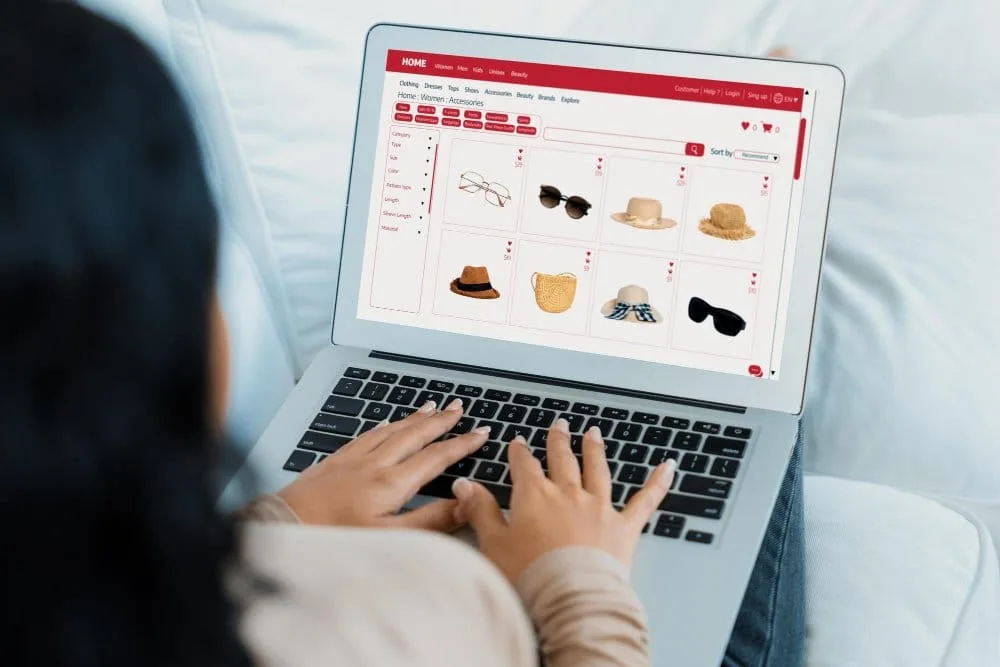
While Vinted offers a strong platform for selling secondhand fashion with no seller fees, several alternatives might work better depending on specific needs.
Top Alternatives to Vinted in the US Market
Poshmark
- Stronger social selling features with a community focus
- Higher-end audience willing to pay more for quality items
- “Posh Parties” that boost visibility for featured categories
- Better for designer and brand-name fashion items
- 20% seller fee (higher than eBay but includes shipping label)
Mercari
- Broader category options beyond just fashion
- Lower buyer fees, potentially attracting more purchasers
- Strong mobile app experience with simple listing process
- Growing user base across diverse demographics
- 10% seller fee
ThredUP
- Consignment model where they handle everything (photos, listing, shipping)
- Professional photography and descriptions increase appeal
- Good for bulk selling with their “Clean Out Kit” program
- Higher potential reach through their marketing efforts
Facebook Marketplace
- Zero selling fees and local pickup options
- Enormous user base with broad demographic reach
- Integration with Facebook groups for targeted selling
- Great for bulky items that would be expensive to ship
Depop
- Instagram-like interface appealing to younger shoppers
- Perfect for vintage, unique, or trendy fashion items
- Strong community of fashion-forward buyers
- Better for building a “brand” as a seller
Each of these alternatives offers distinct advantages over Vinted in certain scenarios. eBay remains superior for high-value items and collectibles, while these specialized platforms excel in their respective niches.
For more comparisons, check out our guides on Poshmark vs eBay, Depop vs Vinted, and Depop vs eBay.
Best Strategy for Maximum Returns
For US sellers seeking the best return on their secondhand fashion, a combination approach often works best: use Vinted for everyday casual items, Poshmark for branded fashion, Mercari for a mix of categories, and eBay for higher-value or unique items.
How Do I Lower My Price on Vinted?

Adjusting prices on Vinted can help move items that have been sitting unsold and attract more potential buyers. Here’s how to effectively lower prices on the platform.
Step-by-Step Price Reduction Guide
- Access your item listing: Open the Vinted app and go to your profile
- Find the item: Tap on “Items” and locate the specific listing to modify
- Edit the listing: Click the “Edit” button (usually three dots or “…”)
- Change the price: Update the price field with the new lower amount
- Save changes: Confirm the price adjustment by saving the updated listing
Strategic Price Lowering Tips
For maximum effectiveness when reducing prices on Vinted:
- Use the “Price Drop” feature: When lowering a price by at least 5%, Vinted notifies followers and people who’ve favorited the item
- Bundle discounts: Set up automatic discounts for buyers who purchase multiple items (e.g., 10% off when buying 2+ items)
- Consider offers: Enable the “Accept Offers” option to negotiate with interested buyers
- Seasonal adjustments: Lower prices on seasonal items as their prime selling window closes
- Competitive pricing: Check what similar items have recently sold for and price accordingly
Pricing Strategy Tip
Many successful Vinted sellers find that starting with a slightly higher price and then making visible reductions generates more interest than starting with the lowest possible price. The notification system alerts potential buyers to these drops, often prompting action from those who were previously “watching” the item.
Comparison of User Base and Reach

Vinted and eBay both attract millions of users, but they target different groups and operate on different scales. Understanding their audience size, worldwide presence, and competition helps sellers see where each one stands in the resale market.
UK Market Insights
In the UK, eBay has a long history and remains one of the most recognized online marketplaces. Its user base is diverse, covering all ages and interests, and people sell everything from fashion to electronics.
Vinted, on the other hand, has gained popularity by specializing in secondhand fashion. Its users in the UK are mostly younger adults and teens focused on affordable clothing. Vinted does not charge selling fees, which appeals to many sellers.
| Platform | Main Product Focus | UK Popularity | Selling Fees |
|---|---|---|---|
| eBay | General goods | Very high | Yes |
| Vinted | Fashion only | Growing | No |
eBay keeps its lead in reach, but Vinted continues to grow among fashion sellers, especially those looking for a simple experience.
US Market Comparison
In the United States, the marketplace landscape shows some key differences. eBay maintains a dominant position with approximately 85 million active buyers across the country. The platform is well-established in all 50 states, with particularly strong user engagement in California, Texas, New York, and Florida.
Vinted has been gaining ground in the US market but remains more niche compared to its European presence. The platform sees highest engagement in urban centers and among younger demographics, with strongest adoption in coastal cities and fashion hubs.
American users on eBay span all age groups and demographics, while Vinted’s US user base skews heavily toward the 18-35 age range. eBay’s US sellers report faster average selling times (typically 3-14 days) compared to Vinted (5-21 days), reflecting the difference in audience size.
International Expansion and Competition
eBay operates in more than 190 markets worldwide. Its international audience is massive, making it easier to sell to buyers in the US, Europe, and beyond. Listings can be seen by a global audience, not just local buyers.
Vinted started in Europe and is expanding steadily. Countries like France, Germany, and the UK have active Vinted communities. However, Vinted’s global reach is still much smaller than eBay’s. In many places outside Europe, Vinted is new or not yet available.
Competition also comes from local resale apps and global marketplaces. Even with this, eBay’s international scale continues to set it apart from most others, especially when wanting to sell to people abroad.
Peer Platforms: Depop and Others
Depop’s main audience is young people, especially in the UK and US. It’s popular for vintage and streetwear, and the app is known for its social media-style layout. Many Depop users also use Vinted, but Depop takes a fee from each sale, which can affect profits.
In the US market specifically, platforms like Poshmark and Mercari have carved out significant user bases that compete with both Vinted and eBay in the fashion resale space. Poshmark reports over 80 million registered users primarily in the US, making it a major competitor that many American sellers use alongside eBay.
Sustainability and the Circular Economy

Vinted and eBay both help reduce waste by making it easy to buy and sell secondhand clothing online. These platforms play a role in the circular economy by keeping unwanted clothes in use and giving customers more sustainable choices.
Impact on the Fashion Life Cycle
Both Vinted and eBay extend the life of clothes. When listing used shirts, pants, or jackets, it keeps them from ending up in landfills. This practice also uses fewer resources than making new items. By shopping secondhand, buyers avoid supporting the fast fashion cycle, which creates a lot of waste and pollution.
eBay supports a variety of categories, including clothes, shoes, and accessories. Vinted focuses mainly on fashion, making it easier to find and list items specifically in this market. Both sites encourage people to reuse and recycle, which is a key part of the circular economy. As a result, brands and users are less likely to throw away unwanted items and more likely to keep them in use.
Supporting Free Fashion Selling
On Vinted, sellers can list most items for free, which helps clear out clothes no longer wanted without paying extra fees. This makes it simple for anyone to try selling old clothes, even if they’re only getting rid of a few items from their closet. The platform’s free listings support large numbers of everyday users.
eBay sometimes charges fees, but its reach is broader and it offers more advanced selling features. For those who want to sell unwanted clothes or build a small business, this can matter. Vinted’s no-fee system makes it easy to enter the circular economy, while eBay’s worldwide audience increases the chance of finding a buyer. Both models support the idea of keeping clothes in use for longer and encourage sustainable choices.
US Tax Considerations for Online Sellers

When selling on platforms like Vinted or eBay in the United States, being aware of tax implications is important and could affect online selling activity.
IRS Reporting Requirements
The IRS has specific thresholds for reporting income from online sales. As of 2024, platforms must report to the IRS when sellers exceed:
- $600 in total transactions (through Form 1099-K)
- This threshold is significantly lower than previous years
This means even casual sellers might receive tax forms from platforms like eBay or Vinted if sales exceed this amount. However, not all sales are considered taxable income:
- Personal items sold at a loss (less than originally paid) are generally not taxable
- Items sold for profit may be subject to capital gains tax
- Regular selling that resembles a business is considered self-employment income
Will Vinted Tell HMRC?
In the UK, Vinted is required to report seller information to HMRC (Her Majesty’s Revenue and Customs) under new rules that took effect in 2024. If UK sellers make more than 30 sales or earn over £1,700 in a calendar year, Vinted will report this information to HMRC. This doesn’t mean the income is automatically taxable, but sellers should keep records and understand their tax obligations.
State Sales Tax Considerations
Beyond federal taxes, state sales tax can create additional complexity:
- Most states require sellers to collect sales tax on transactions to buyers within that state
- Marketplace facilitator laws in most states now require platforms like eBay to collect and remit sales tax automatically
- Vinted has also implemented automated sales tax collection in states with marketplace facilitator laws
- Some states have economic nexus thresholds that may require sellers to register for sales tax permits
For US sellers who are increasingly serious about their online selling, keeping detailed records is necessary:
- Track original purchase prices when possible
- Document selling prices and dates
- Save records of selling fees, shipping costs, and other expenses
- Consider using accounting software if sales volume is significant
Tax Advice Recommendation
When in doubt, consulting with a tax professional who understands e-commerce is recommended, especially if online selling has grown beyond just clearing out a closet. Tax laws are complex and vary by situation.
Frequently Asked Questions
Conclusion
After examining both Vinted and eBay in depth, it’s clear that each platform offers distinct advantages depending on what’s being sold and what priorities matter most as a seller.
Summary of Key Differences
Vinted shines as a specialized marketplace for fashion items with its zero-seller-fee model and straightforward listing process. The platform creates a community-focused experience that’s perfect for casual sellers looking to clear out their closets without the complexity or costs associated with more comprehensive marketplaces. Its strengths in the fashion category make it particularly appealing to younger demographics looking for affordable secondhand clothing.
eBay, with its massive global reach and diverse category options, provides sellers with unparalleled audience access and selling tools. While it does charge fees in most cases, the platform’s extensive features, auction capabilities, and broader product categories make it perfect for those looking to sell higher-value items or build a more substantial selling business. Its established reputation and robust buyer/seller protection systems also provide additional security for more valuable transactions.
Recommendations Based on Seller Needs
Choose Vinted if:
- Primarily selling everyday clothing and accessories
- Avoiding seller fees is the top priority
- Preferring a simple, streamlined selling process
- A casual seller clearing out a personal wardrobe
- Comfortable with a younger, fashion-focused audience
Choose eBay if:
- Selling higher-value items or collectibles
- Wanting access to the largest possible audience
- Needing to sell across multiple product categories
- Building a more substantial reselling business
- Wanting the option of auction-style listings
- International selling is important
Consider using both platforms if:
- Having a diverse inventory spanning different value points
- Testing which platform works best for specific items
- Wanting to maximize visibility across different buyer demographics
- Willing to manage listings across multiple platforms
Final Takeaways
The secondhand marketplace landscape continues to change rapidly, with both Vinted and eBay adapting their models to remain competitive. For US sellers in particular, understanding the distinct advantages each platform offers allows for strategic positioning of items where they’re most likely to sell quickly and at the best prices.
The best approach often involves using multiple platforms strategically. Perhaps listing everyday fashion items on Vinted to avoid fees while reserving higher-value or specialty items for eBay to use its broader reach and auction capabilities. Many successful sellers use Vinted for quick, fee-free sales of lower-value items while using eBay’s extensive tools and audience for items where maximum visibility justifies the additional fees.
Ultimately, the choice should align with specific selling goals, the types of items being offered, and how much time can be invested in the selling process. By understanding the strengths and limitations of each platform, informed decisions can be made that maximize profits while minimizing hassles in the growing secondhand marketplace economy.
Action Steps to Get Started
- Start by listing a few items on each platform to see which works better
- Take high-quality photos and write detailed, honest descriptions
- Price competitively by researching similar sold items
- Respond quickly to buyer questions on both platforms
- Keep records of all sales for tax purposes
- Consider cross-listing higher-value items for maximum exposure
- Join seller communities to learn tips and best practices
Whether choosing Vinted’s simplicity and zero fees or eBay’s reach and versatility, both platforms offer genuine opportunities to turn unwanted items into cash while participating in the sustainable secondhand economy. The key is understanding which platform aligns best with specific needs and making the most of what each has to offer.
For more guidance on selling clothes online, explore our related articles on where to sell old toddler clothes, Depop vs Poshmark, and tips for choosing fabrics for clothing.
Need More Help?
For additional resources and tools to help with your online selling:
- Official eBay Seller Center: ebay.com/sellercenter
- Vinted Help Center: vinted.com/help
- IRS Tax Information for Online Sellers: irs.gov

